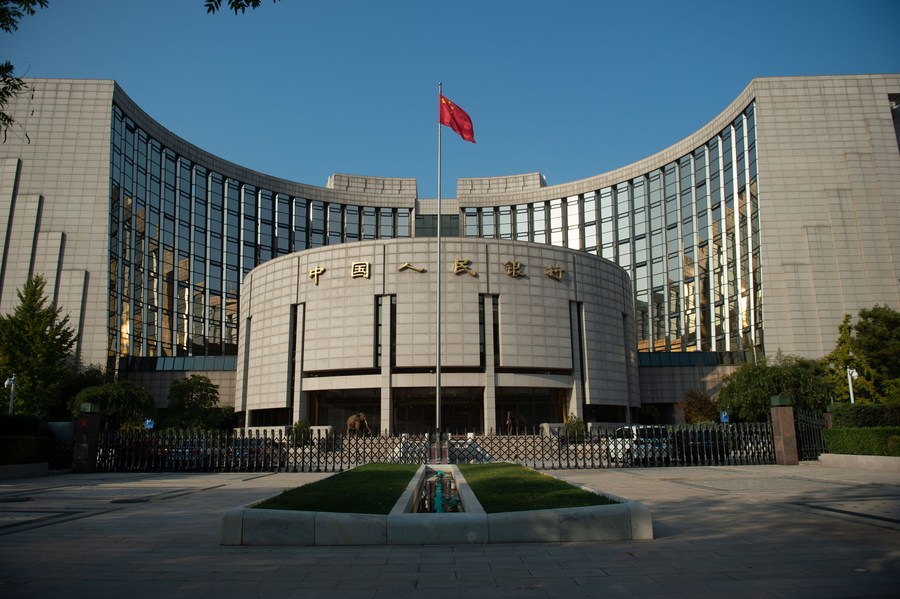
File photo shows an exterior view of the People's Bank of China in Beijing, capital of China. (Xinhua/Peng Ziyang)
BEIJING, Aug. 17 (Xinhua) -- China has conducted some policy rate adjustments as part of efforts to shore up economic recovery.
The People's Bank of China (PBOC), the country's central bank, cut the interest rate of the one-year medium-term lending facility (MLF) from 2.65 percent to 2.5 percent, injecting 401 billion yuan (about 55.64 billion U.S. dollars) into the market.
At the same time, the PBOC conducted seven-day reverse repos worth 204 billion yuan at an interest rate of 1.8 percent, down from 1.9 percent. Later the same day, it lowered the overnight, seven-day and one-month interest rates on its standing lending facility all by 10 basis points to 2.65 percent, 2.8 percent and 3.15 percent, respectively.
The interest rate lowering is to reduce the financing cost for the real economy, and prevent funds from simply circulating in the monetary market for the sake of arbitrage, said Wang Qing, an analyst at Golden Credit Rating.
China's yuan-denominated loans rose by 345.9 billion yuan in July, decreasing by 349.8 billion yuan from the same period last year, and industry insiders believe that it reflects that the foundation for economic recovery needs to further consolidate besides seasonal factors.
"The endogenous driving force for economic recovery is still not strong, while the effective demand is insufficient," said Wen Bin, chief economist of China Minsheng Bank, adding that more counter-cyclical adjustment is needed to perk up confidence and stabilize expectations and growth.
As the MLF interest rate usually acts as the anchor for the loan prime rates (LPR), the pricing reference for bank lending, experts predict that the LPRs are likely to be lowered this month.
The slight decline would be beneficial to monetary credit growth, promoting the decrease of the comprehensive financing costs for enterprises and the credit rates for residents while keeping them stable overall, said Zhang Xu, an analyst with Everbright Securities.
Looking ahead, experts say that China still possesses room to step up counter-cyclical adjustment with monetary policies.
The country has not implemented strong stimulus policies in the past three years, so it still has relatively large policy space and ample policy tools, said Dong Ximiao, chief researcher with Merchants Union Consumer Finance Company Limited, noting that the weighted average reserve requirement ratio (RRR) for Chinese financial institutions now stands at 7.6 percent, providing room for further cuts.
He said the RRR cut is expected to inject liquidity into the banking system, reduce banks' capital costs to support the real economy, and send clear policy signals to the market.
Moving forward, China's monetary policy needs to be more powerful and targeted. It needs to enhance synergy with fiscal policies to create a favorable financial environment to advance the high-quality development of the economy, said Bruce Pang, the Greater China chief economist of real estate and investment management services firm JLL.















